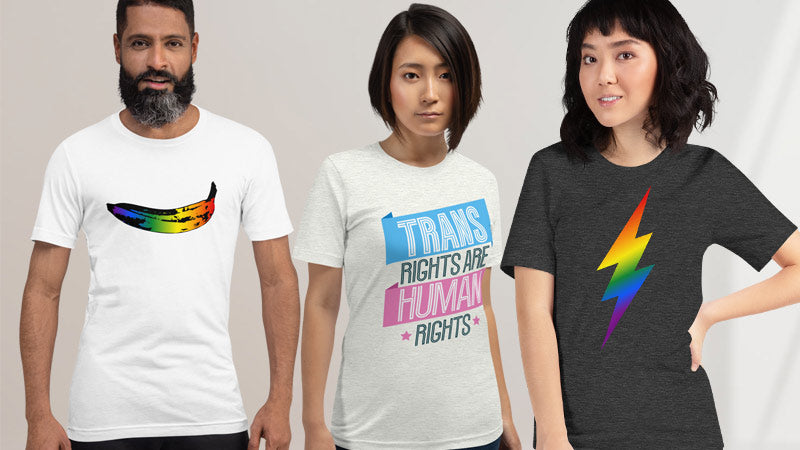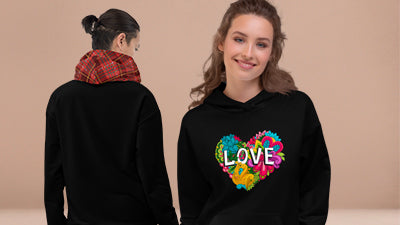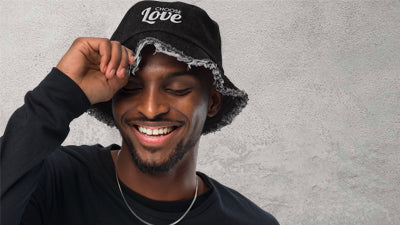Gender-Fluid Visibility Week

When is Gender-Fluid Visibility Week, and What is it?
Gender-Fluid visibility week runs between the 17th and 24th of October every year. It was started in 2021 by the Twitter account @LGBTQcontent and is also known as Gender-Fluid Week, Fluid Week, or Gender-Fluid Awareness Week.
As it began so recently, it has an exciting potential to be whatever you want it to be! As with all LGBTQ+ awareness and visibility weeks, the main goal is to educate people about the existence of a specific group of people and the unique challenges and joys they experience. It is also simply an opportunity to showcase Gender-Fluid culture and amplify Gender-Fluid voices.
Although at present it is mainly an online event, people are encouraged to organise in-person events to celebrate Gender-Fluidity. During the week, Gender-Fluid people around the world share selfies, personal stories, and art such as drawings and poems on social media sites including Tumblr, Twitter, and Instagram. It is the perfect time for LGBTQ+ organisations to share educational material and for companies to show their support for their Gender-Fluid employees.
Overall, it is a time to have fun and try new things. Why not try expressing yourself in a different way, for example wearing clothes of the opposite gender presentation to what you’re used to?
OUR GENDER-FLUID COLLECTION view the full collection
What Does Gender-Fluid Mean?
Gender-Fluid falls under the Trans and Non-Binary umbrella, as it doesn’t fit into the typical binary of male and female. It can mean someone whose gender fluctuates on a daily, weekly or monthly basis, or even throughout the day. They can feel masculine one moment, feminine the next, a combination of both, or completely genderless.
These gendered energies can shift unpredictably, but this is exciting, not scary. Most Gender-Fluid people enjoy the frequently hanging nature of their gender, and embrace the experience. They adapt to their identity by recognising when they feel a certain way, and learning which pronouns and gendered language affirms them in each state.

There are several other terms which relate to Gender-Fluid. Polygender, Plurigender or Multigender means a person who experiences multiple genders. Novigender is someone whose experience of gender cannot be defined by words. Pangender means individuals whose gender identity is numerous, either fixed or fluid.
It’s important to note that many of these terms were coined by Neurodiverse people as a way of understanding their gender and sexuality, because they didn’t feel appropriately represented by umbrella terms such as Non-Binary or Gender Queer.
A notable example of Gender-Fluid is Two Spirit, a term used in some Native American / Indigenous communities to represent a complex Non-Binary identity that differs from traditional Western gender roles and attitudes. Although the term, introduced in 1990 at the Gay and Lesbian gathering in Winnipeg, is somewhat contested today, it has been praised for replacing a problematic anthropological term.
What Challenges do Gender-Fluid People Face?
Gender-Fluid people can face rejection and erasure from both within and outside the LGBTQ+ community. Those inside, for example Gay, Lesbian, Bisexual and Transgender people, may feel that they are more legitimate because they have been around for longer, that they have more powerful histories rooted in activism. But Gender-Fluidity is as old as humanity itself.
Who are we to say that even the earliest human beings didn’t feel like they fluctuated between states of gender on a regular basis?
In a similar way to how Bisexuals are often told they’re not Bisexual if they are in a heterosexual-presenting relationship, Gender-Fluid people may have their identity challenged.
Some may claim people are identifying as Gender-Fluid to seem cool or different, to stand out or to be part of a growing trend. They may expect you to live up to the title by drastically changing your appearance on a daily basis, switching from masculine clothes to feminine clothes and makeup.
Gender-Fluid people don’t have to listen to these opinions, and they certainly don’t owe anyone an explanation of their identity. Gender identity and gender expression are different, so they’re allowed to express themselves in any way and to identify as Gender-Fluid.
How is Gender-Fluid Different from Gender Queer?
Gender Queer is an umbrella term for people identifying outside of the traditional binary of cis male and cis female. This can include Transfeminine, Transmasculine, Non-Binary, and Gender-Fluid. Gender Queer is to gender what Queer is to heterosexuality. It is a catch-all term providing an opposite.
Gender-Fluid is slightly different to Gender Queer because you can be fixed in a Gender Queer state. For example, Non-Binary is a fixed Gender Queer identity. If someone identifies as Non-Binary, they feel that way one day and the next. Whereas Gender-Fluid people can fluctuate on a regular basis between feminine, masculine, Non-Binary or Agender (feeling a lack of gender altogether).
To put it simply, Gender-Fluid is a type of Gender Queer, but not all Gender Queer people are Gender-Fluid.
Gender-Fluid Icons You Should KNow
Ruby Rose, Ruby Rose Langenheim to giver her her full name is an Australian actor, model, DJ and TV presenter.
Courtney Act, Australian drag queen and TV personality who rose to fame on Australian Idol, and went on to feature on season six of Rupaul's Drag Race.
Dorian Electra, is an American singer-songwriter known for their non-conforming fashion aesthetics and unusual song choices.
Bilal Baig, Canadian actor and playwright most noted for their play Acha Bacha and television series Sort Of.
Miley Cyrus, multi-platinum winning, NTV Award winning music star, songwriter and actor. One of the few child stars who has then found adult fame.
Cara Delevingne, model and actor who has recently produced and presented a BBC TV show called Planet Sex, about sexuality and gender diversity.
Nico Tortorella, an American actor and model known for roles in films including Scream 4, and TV series The Following, TV Land, Younger and The Walking Dead: World Beyond.
How Can You Support Gender-Fluid Friends?
Firstly ask your Gender-Fluid friends or colleagues how they would like you to support them. On an everyday level, you could ask them which pronouns they feel like using that day, or how their gender feels. They will appreciate you taking time to understand them and their identity more intimately.
You can even arrange a code or symbols as a shorthand, for example different coloured bracelets or earrings that let you know which gender and pronouns they identify with on that day.
An important way you can honour your friends’ identity is to adapt your language to their expression. When Gender-Fluid people present or feel masculine, they may prefer compliments like “handsome” or “cool”, whereas when they are feminine, they may prefer “pretty” or “beautiful”.
Of course, there will be exceptions to this, and you should always check with your friends the types of terms that affirm them.
Above all, show your interest and take their Gender-Fluidity seriously. They don’t identify this way to confuse you or be difficult, but because it accurately represents their experience of the world and their perception of themselves. Be kind and curious!
The Gender-Fluid Pride Flag
This five striped flag was created in 2012 by JJ Poole as a symbol for those who's gender expression or both change over time. The means of the colours are as follows: The pink stripe represents femininity, the white stripe represents all genders, the purple stripe represents both masculinity and femininity, the black stripe represents the lack of gender and the blue stripe represents masculinity.














